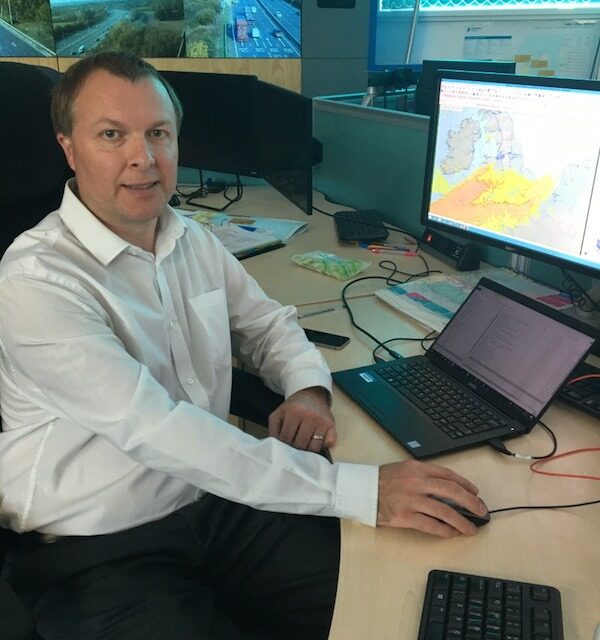With snow forecast in some areas this week, National Highways and the Met Office are building on their unique partnership to help inform motorists about the latest conditions on the roads.
For several years, Met Office meteorologists have been based at the NTOC National Traffic Operations Centre between October and April to provide daily weather forecasts to National Highways staff and public weather warnings.
Now there are even closer links being developed with the meteorologists providing weather forecasts for specific operational projects such as when abnormal loads are being transported somewhere on the network.
Ryan Biggerstaff, National Operations Team Leader, at National Highways said: “We have benefitted for several years from the expertise that our Met Office colleagues bring each day across what tends to be the worse period of the year for extremes of weather.
“Developing that so their knowledge and experience helps plan specific operations is a positive step forward and even help us to decide if we are able to go ahead with planned works if the forecast in that part of the country is expected to be poor.”
Earlier this year, the M25 Jct 10 Project Team were due to close the A3 in Surrey for a weekend whilst 10 large concrete bridge beams were lifted into place. The 80 tonne, 35-metre-long beams had been manufactured in Ireland and shipped to the site via a ferry into Liverpool docks, then via the M6, M40 and M25 motorways.
As part of the project, nature provided a challenge, an approaching storm with high winds along a vulnerable part of the route. These winds were forecasted to be just above the limits this abnormal load could withstand however, the National Network Manager sought the expertise of Met Office forecasters at NTOC to provide the haulier with a dedicated forecast for the route. Location specific analysis of the broad regional data allowed more detailed understanding of the winds for that particular route, showing that at the planned journey time winds were forecast to be slightly below the operating limits, allowing the journey to go ahead.
During the 24-hour journey from Ireland to the south-east, the National Network Manager closely monitored the journey to ensure that it went smoothly and kept the project team updated on the progress outside of business hours.
With just hours to spare, the last two beams arrived in time for the weekend closure of the A3. This prevented a significant delay and cost to the Wisely Project.
The Met Office have three meteorologists based at NTOC on a rolling programme between October and April.
Mike Bench, Senior Meteorologist and Team Leader for the Met Office, said: “We provide national forecasts and alerts as required, and a new dimension to our work this winter is to offer extra assistance for specific operations such as the example with the abnormal loads.
“Working in the same office gives us an opportunity to live and breathe what is happening. We get first hand to hear it and see the real pinch points are. It is particularly effective when we have floods or snow impacting on the network to be able to inform and engage with National Highways colleagues.”
A typical day for the Met Office forecasters is to start at 6am alongside the National Network Manager and National Incident Liaison Officer team to see if anything significant is being impacted by the weather. They then provide a national ten-day forecast covering each region of National Highways and take part in teleconference providing feedback and forecasts for key structures like the QEII Bridge at Dartford, Orwell Bridge near Ipswich or the Severn Crossing connecting England and Wales.
There is then a further conference call with the chief forecaster at the Met Office and national responders to discuss any weather warnings which might be needed. This could be if there is the risk of flooding or snow somewhere on the network, and updates are then provided to National Highways’ severe weather information service.
The Met Office forecasters are also aware of dedicated resources on the network such as Operation Brock in Kent – which is used when queues begin to build at the Port of Dover and Channel Tunnel, this allows National Highways to plan and adapt to changing weather patterns.
Mike added: “We are always looking to the future, taking part in work to update the national forecast which we give to the regions and how we can refine it to help National Highways keep road users safe and the country moving.”
National Highways reminds motorists of its TRIP acronym for journeys on the network: Top-up: oil, water and screenwash; Rest: every two hours; Inspect: lights and tyres; Prepare: check the latest weather forecasts.








